D076 Finance Skills for Managers WGU Questions and Answers Already Passed
Document Content and Description Below
Real Return ✔✔Rate of growth in purchasing power of goods and services Holding Period Return ✔✔Return over the entire period that an investor owns a financial security Beta ✔✔A measure ... of the volatility, or systematic risk, of a security or a portfolio in comparison to the market as a whole. standard deviation ✔✔Used to measure the total risk of securities annuity due ✔✔an annuity whose payments occur at the beginning of each period, consecutively Par Bond ✔✔When the bond's coupon rate equals the market yield; Bonds are typically issued near par value Pi ✔✔Profitability index. At 1, the PI means a internal return rate equal to the cost of capitalIrr ✔✔Internal rate of return (IRR) is a discount rate at which the net present value (NPV) of an investment is equal to zero. If the IRR is higher than the cost of borrowing to fund the investment, the investment should be profitable. Always shown as percentage. Net Present Value (NPV) ✔✔A method of ranking investment proposals using the NPV, which is equal to the present value of the project's free cash flows discounted at the cost of capital. Shown as dollar amount.. At $0 it means it will neither add nor subtract value. Inventory Turnover ✔✔An activity ratio found by COGS divided by inventory dividends in arrears ✔✔Feature of preferred stock specifying that if a company ignores preferred stock dividends it cannot pay anything to it's common stockholders Agency Problem ✔✔the possibility of conflict of interest between the owners and management of a firm Resolved by aligning interests, example giving shares to manangementOperating Margin ✔✔A profitability ratio found by EBIT profit divided by sales Capital Structure ✔✔the mixture of debt and equity maintained by a firm Defensive Assets ✔✔Companies or securities with betas less than 1. Variable Expenditure ✔✔an expense that you have direct control over and that can change from period to period Price Risk ✔✔Potential for the decline in the price of a financial security or an asset relative to the market efficient market ✔✔a market in which prices fully reflect all the available information about a specific security trend analysis ✔✔Comparing a firms ratio across timeCoupon Yield ✔✔The stated interest rate of a bond; also known as coupon rate syndicate ✔✔a group of intermediaries that is used to oversee the issuance of stocks and/or bonds premium bond ✔✔A bond whose price is above it's par value Upside value ✔✔The unlimited earnings potential of equity ownership Treasury Notes ✔✔A note issued by the US government as a financial security with a fixed interest rate and a short maturity between 1 and 10 years; abbreviated T-note. discount bond ✔✔A bond whose price is below it's par value Fixed Asset Turnover FAT ✔✔An activity ratio found by sales divided by fixed assets Fixed means property, plant and equipment.Operating income Return on Investment (OIROI) ✔✔Operating income (EBIT) over total assets. Before any finance or taxes. Activity Ratios ✔✔A category of ratios that measure how well a company uses its assets to generate sales or cash, showing the firms operational efficiency and profitability. Example: AR ( accts receivable) turnover: credit sales over accounts receivable. If number is 12 that means we collect once per month. Average Collection Period (ACP) ✔✔the average length of time required to convert the firm's receivables into cash, that is, to collect cash following a sale. Uses the accounts receivable turnover number (7) as denominator. 365/7 = so 52 days to collect receivables.coupon rate ✔✔The stated interest rate of a bond; also known as coupon yield Market Capitalization ✔✔The current market value of a publicly traded companys total outstanding shares, indicating the size of a company financial risk ✔✔risk associated with a monetary outlay; includes the initial cost of the purchase, as well as the costs of using the item or service trend analysis ✔✔Looking at financial ratios over time. Sometimes 5 years back and 3 forward, which leads to future forecast. Total Asset Turnover ✔✔Sales/Total Assets How efficiently a firm is using assets to generate sales. Timing issues (limitation of financial reports) ✔✔This limitation to financial reports refers to how businesses can exploit timing issues in financial statements to give a misleading impression of the financial position of the business. For example, when an accountant records revenue, they should also record at the same time any expenses that were directly related to that revenue.Seasonal firms (Christmas tree farm) or high growth firms. Accounting Issues ✔✔Different types of inventory systems lead to different quick ratios - a potential deficit of ratio comparison Quick Ratio ✔✔(Current Assets - Inventory) / Current Liabilities Sometimes inventory take a long time to to sell. Sometimes called ACID test 5 Catagories of Financial ratios ✔✔Liquidity, Activity, leverage, profitability, market. (Liquids and levers promote markets) mnemonic Activity is also called efficiency Current Ratio ✔✔current assets divided by current liabilitiesConsider within a year. Higher values (>1) indicate that the assets can cover liabilities Inventory Turnover Ratio ✔✔cost of goods sold/average inventory Important to understand if firm is selling (turning) inventory per year. Activity Ratios ✔✔measure the effectiveness of the use of resources from an operational point of view. Analyze inventories, fixed assets, accounts receivable Profitability Ratios ✔✔ratios that measure the rate of return a firm is earning on various measures of investment. Example is gross margin - Gross profit over sales. Also Price over earnings (p/e) Helpful for cost efficiency of a firms profitability. DuPont Analysis ✔✔An approach to decomposing return on investment, e.g., return on equity, as the product of other financial ratios.All returns based on the firms profitability and efficiency Example of variable expense ✔✔Magazine subscription Sustainable Growth Rate ✔✔the maximum growth rate a firm can achieve without external equity financing while maintaining a constant debt-equity ratio Capital Budgeting criteria ✔✔Metrics and calculation that use NPV , IRR, PI to evaluate investment common stockholders ✔✔have voting rights Lowest rate of return on your money, highest liquidity ✔✔Bank, savings account. AA rating ✔✔Lower rate of return than AAA rated bonds Market risk ✔✔risk that affects all companies in the stock market. Inherent in the economy, can't be diversified awayfirm-specific risk ✔✔Risk that affects only a single company. Diversification can reduce this. default risk ✔✔the risk that the borrower will not pay the face value of a bond on the maturity date A firm specific risk cost of capital ✔✔Used as the discount rate of cash flow in capital investment projects EBIT ✔✔Earnings before interest and taxes. Used to consider operating earnings. debt ratio ✔✔Total liabilities over total assets. The remaining amount is either equity or retained earnings. 0.3 means 30% of assets are financed through debt.Debt to Equity Ratio ✔✔total liabilities/total equity times interest earned ratio ✔✔EBIT over interest expense. Capital Asset Pricing Model (CAPM) ✔✔Model used to determine risk-return relationship for an asset Operating income Return on Investment ✔✔Activity ratio: Operating Income/Total Assets Accounting vs. Finance ✔✔Accounting is backwards looking and finance is forward investment institution ✔✔Financial firm, such as a mutual fund or a hedge fund, that raises funds to invest in loans and securities. Provides individuals and firms access to financial markets to buy and sell financial securities moral standards ✔✔principles that reflect personal beliefsHow Lender preventing risk ✔✔Set strict covenant that the company can't uphold if it chooses a risky project Ethics ✔✔Accepted standards of conduct Benefits of compounding interest ✔✔Allows lender to gain interest on interest. Detriment because it causes borrower to pay same yield curve ✔✔a graph showing the relationship between bond yields and maturities. If long term rate is < short term it's inverted and may indicate downturn lagging indicators ✔✔indicators that seem to lag behind changes in overall business activity Example; unemployment rate, Consumer price index coincident indicators ✔✔economic indicators that usually change at the same time as changes in overall business activityExample GDP, personal income leading indicators ✔✔key economic variables that economists use to predict a new phase of a business cycle Examples Yield Curve, stock market returns. Normal yield curve shows increasing interest rate in the future required rate of return ✔✔The minimum acceptable rate of return on an investment Aka Hurdle Rate Ordinary Annuity vs. Annuity Due ✔✔Ordinary annuity - no of interest periods is equal to number of payments Annuity due - no of interest periods is one less than no of paymentsDue means due now—first payment is day of signing time value of money ✔✔the principle that a dollar received today is worth more than a dollar received in the futur [Show More]
Last updated: 10 months ago
Preview 4 out of 14 pages

Loading document previews ...
Buy this document to get the full access instantly
Instant Download Access after purchase
Buy NowInstant download
We Accept:

Reviews( 0 )
$10.00
Can't find what you want? Try our AI powered Search
Document information
Connected school, study & course
About the document
Uploaded On
Sep 09, 2024
Number of pages
14
Written in
Additional information
This document has been written for:
Uploaded
Sep 09, 2024
Downloads
0
Views
19

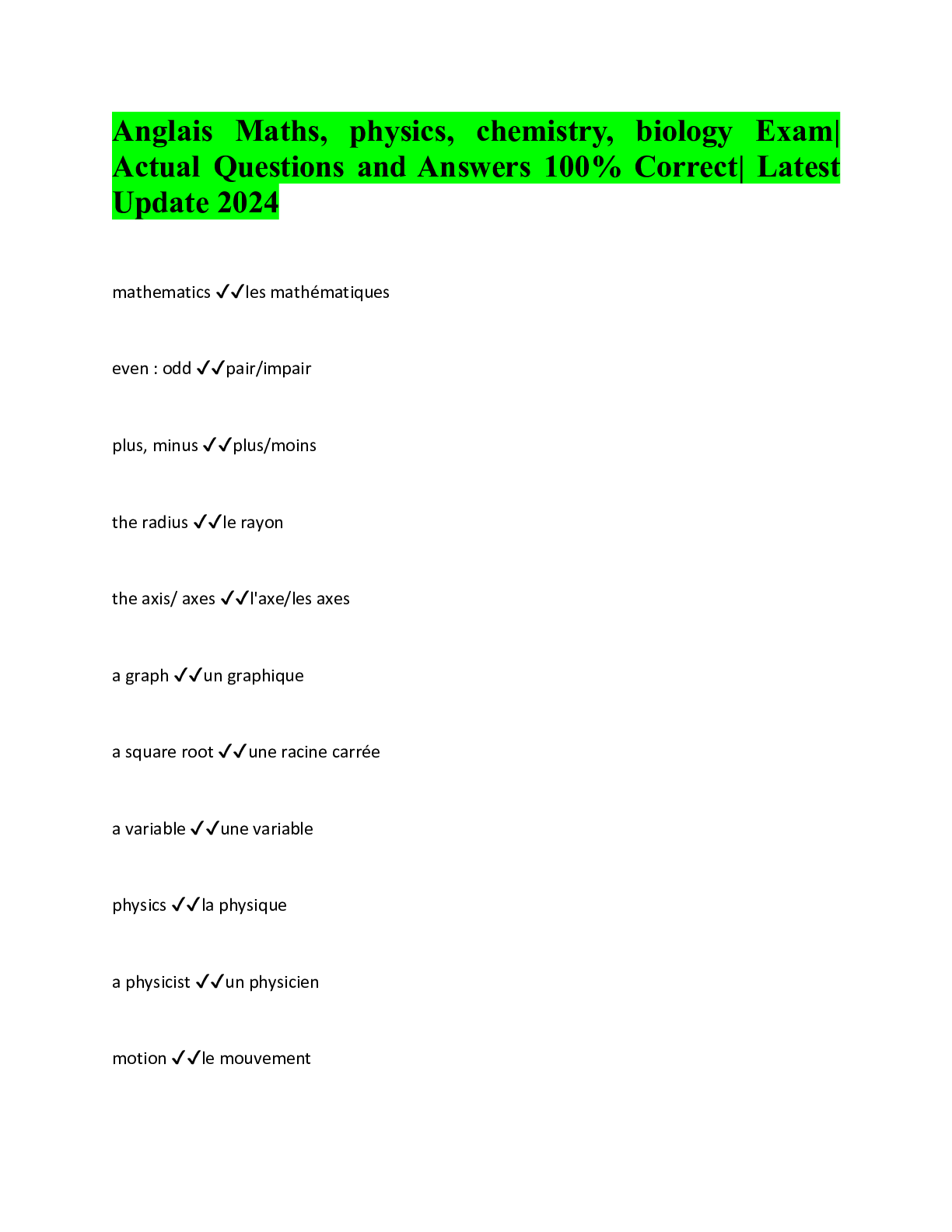
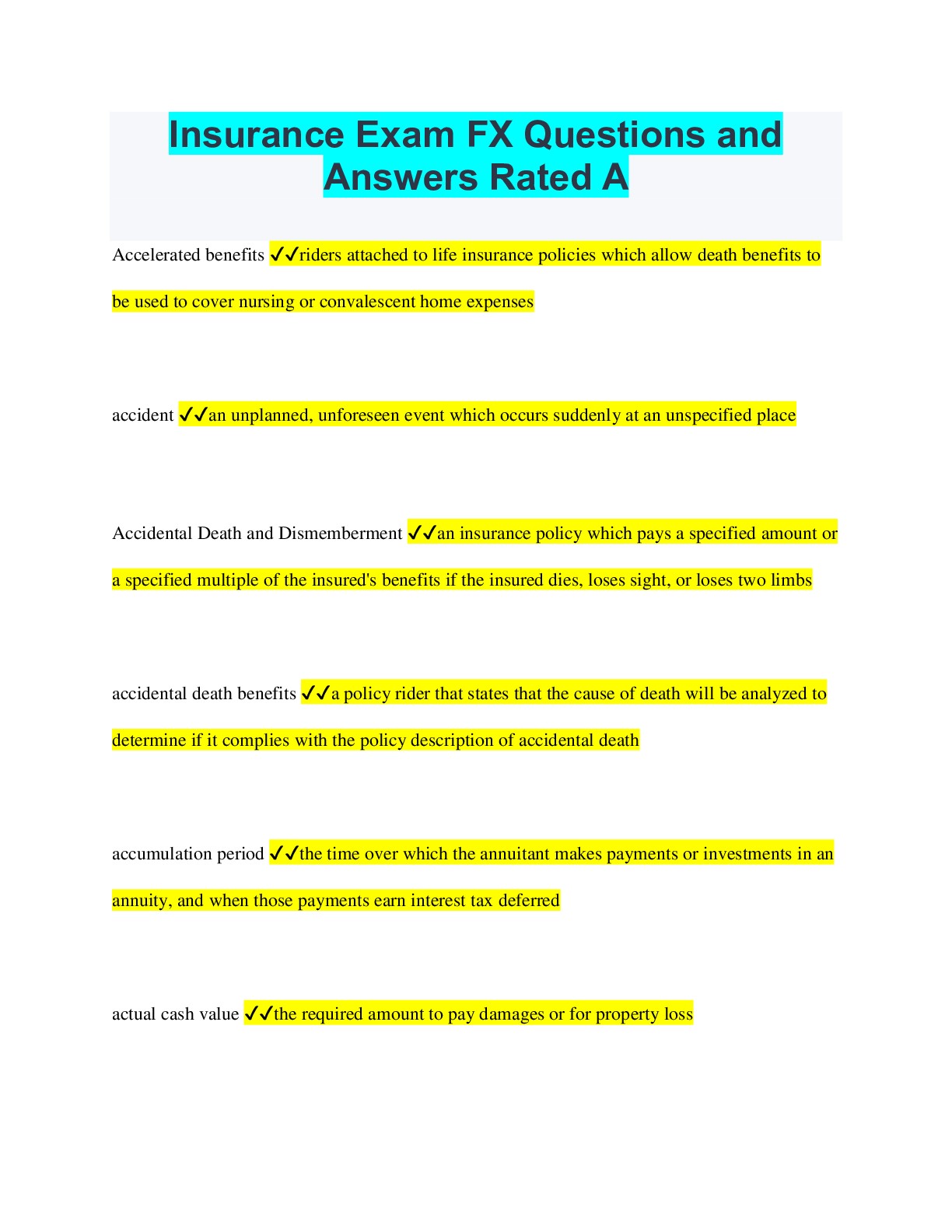
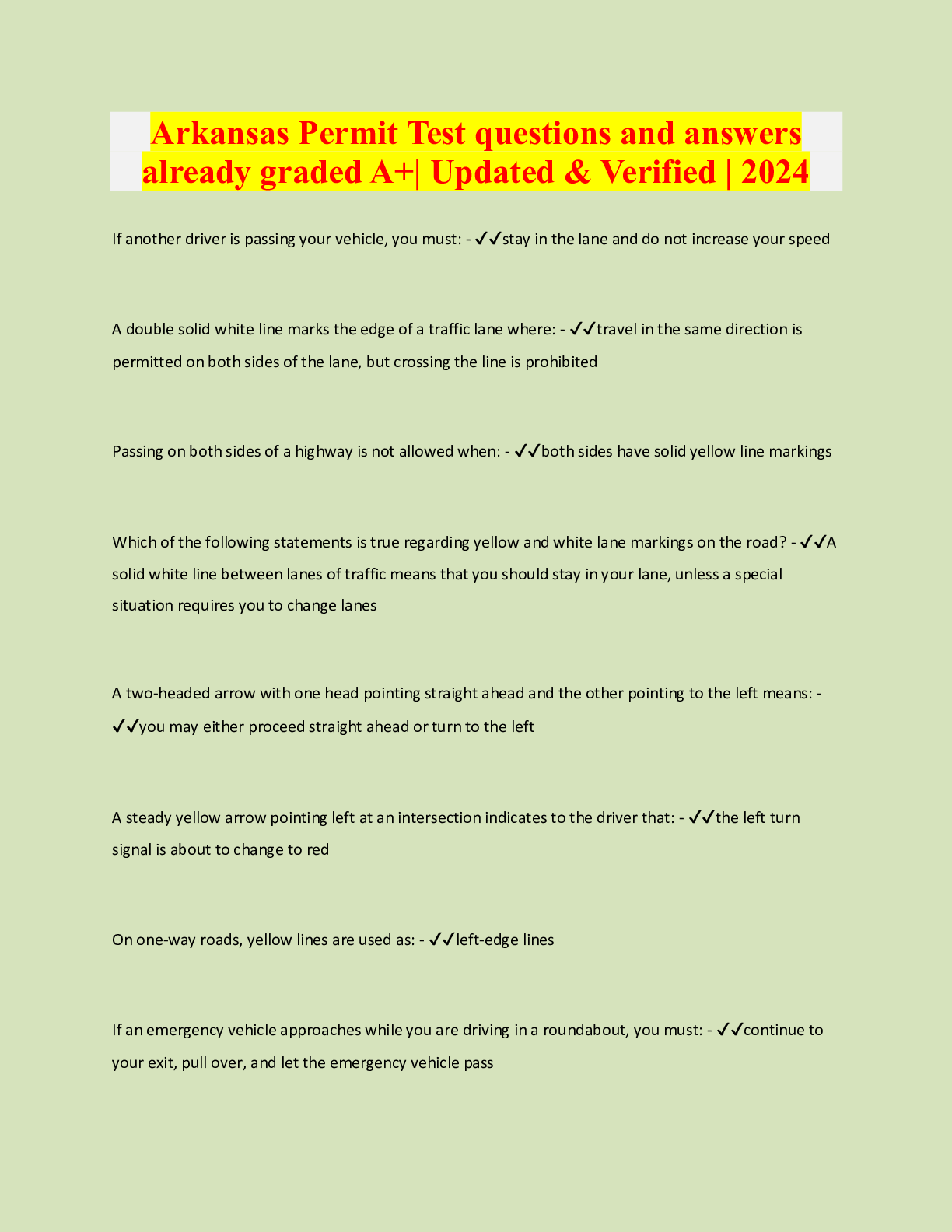

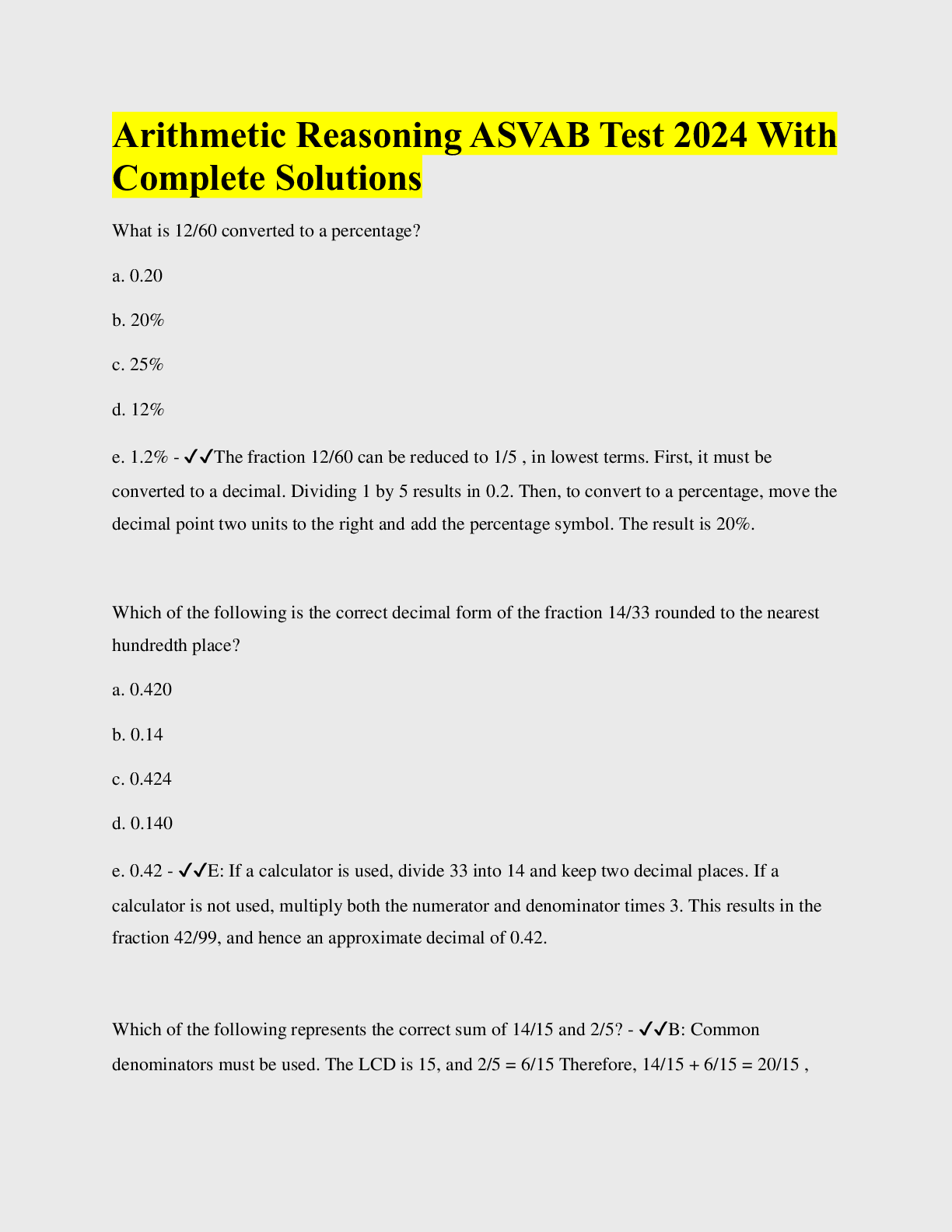
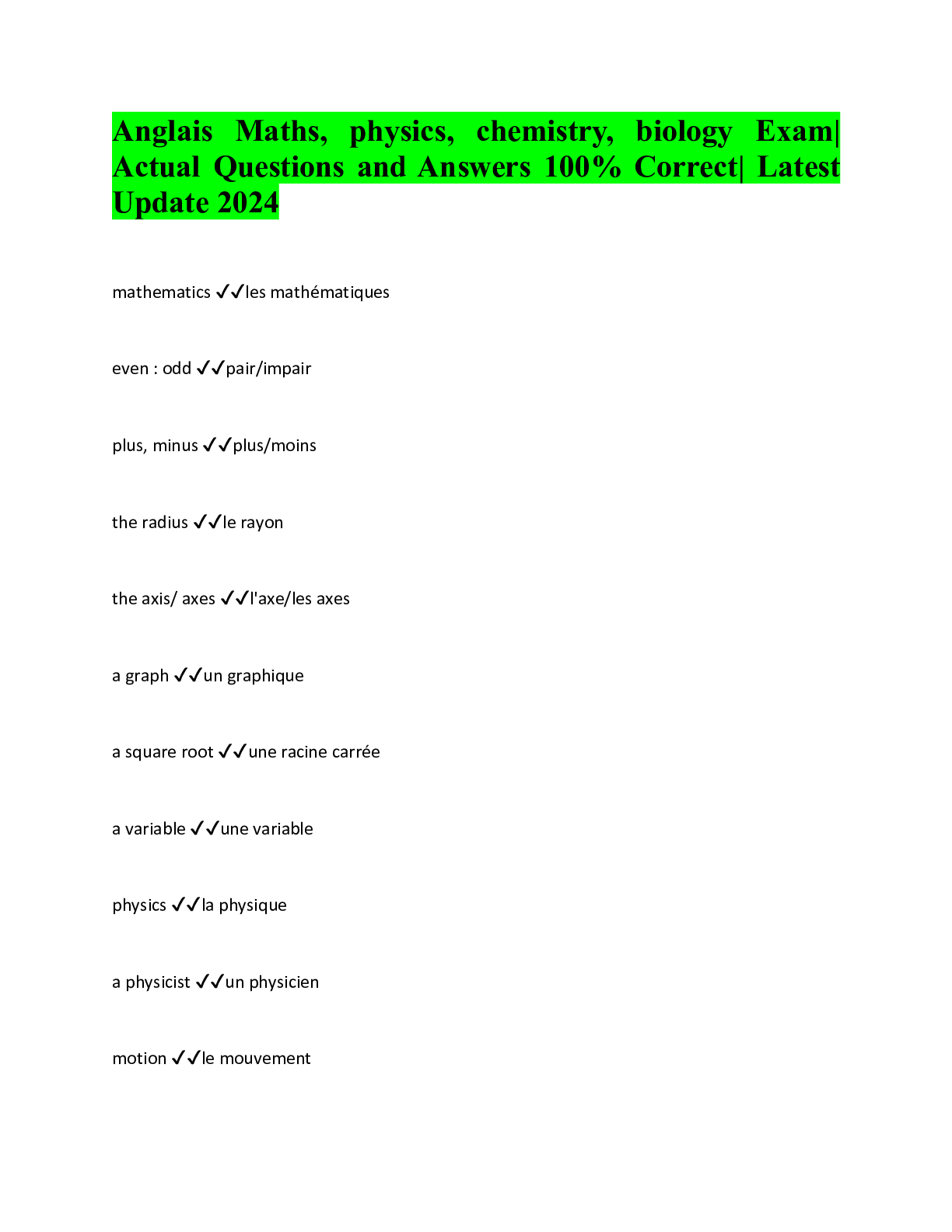

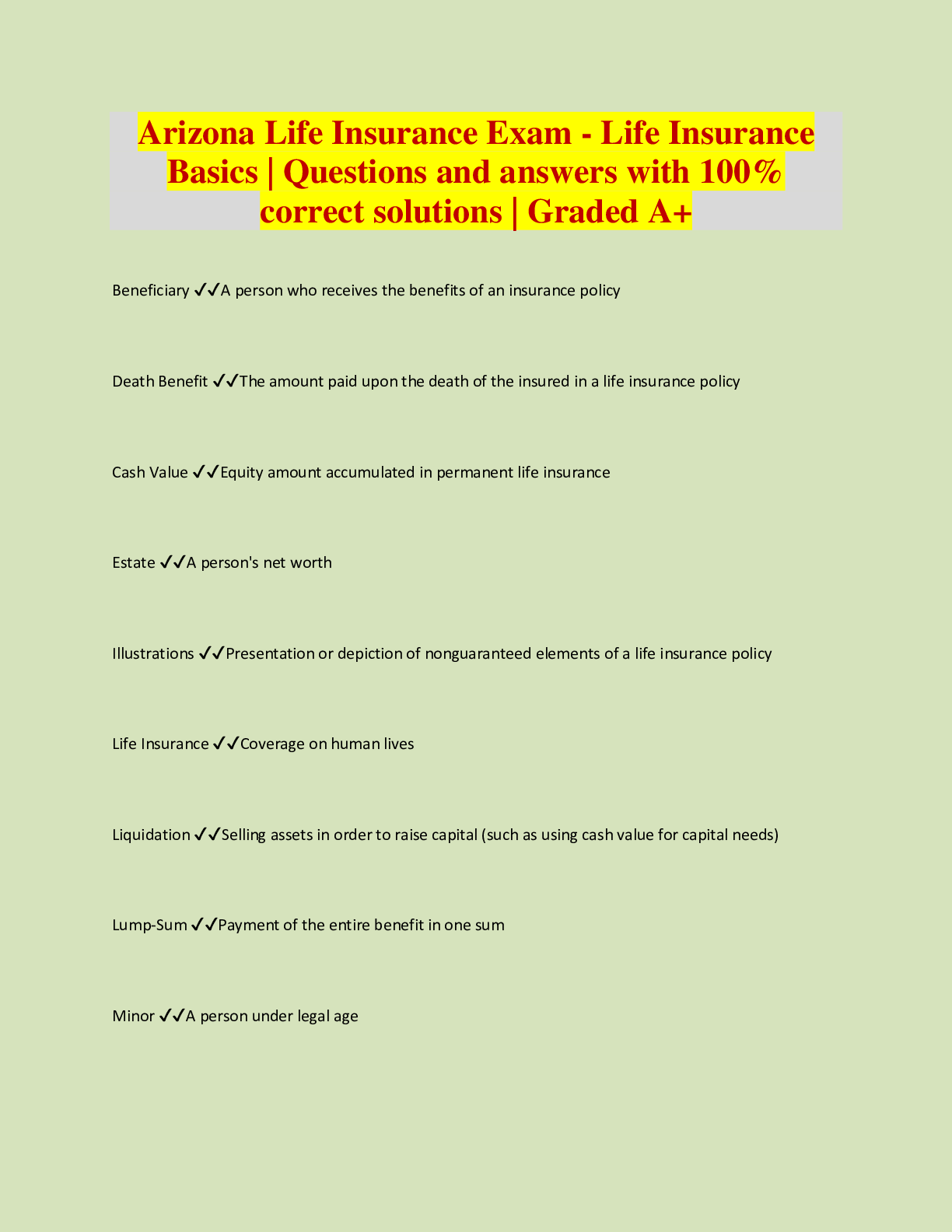
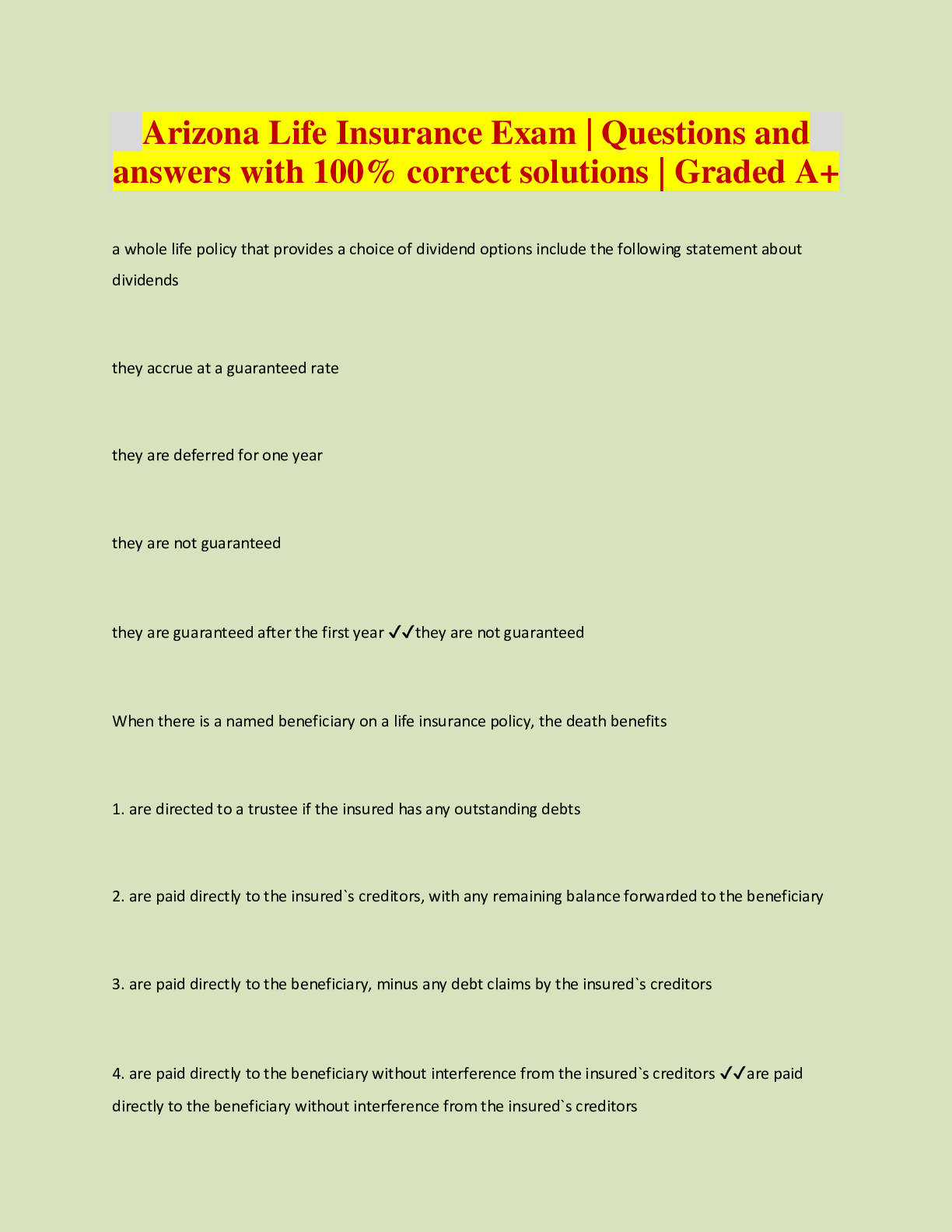
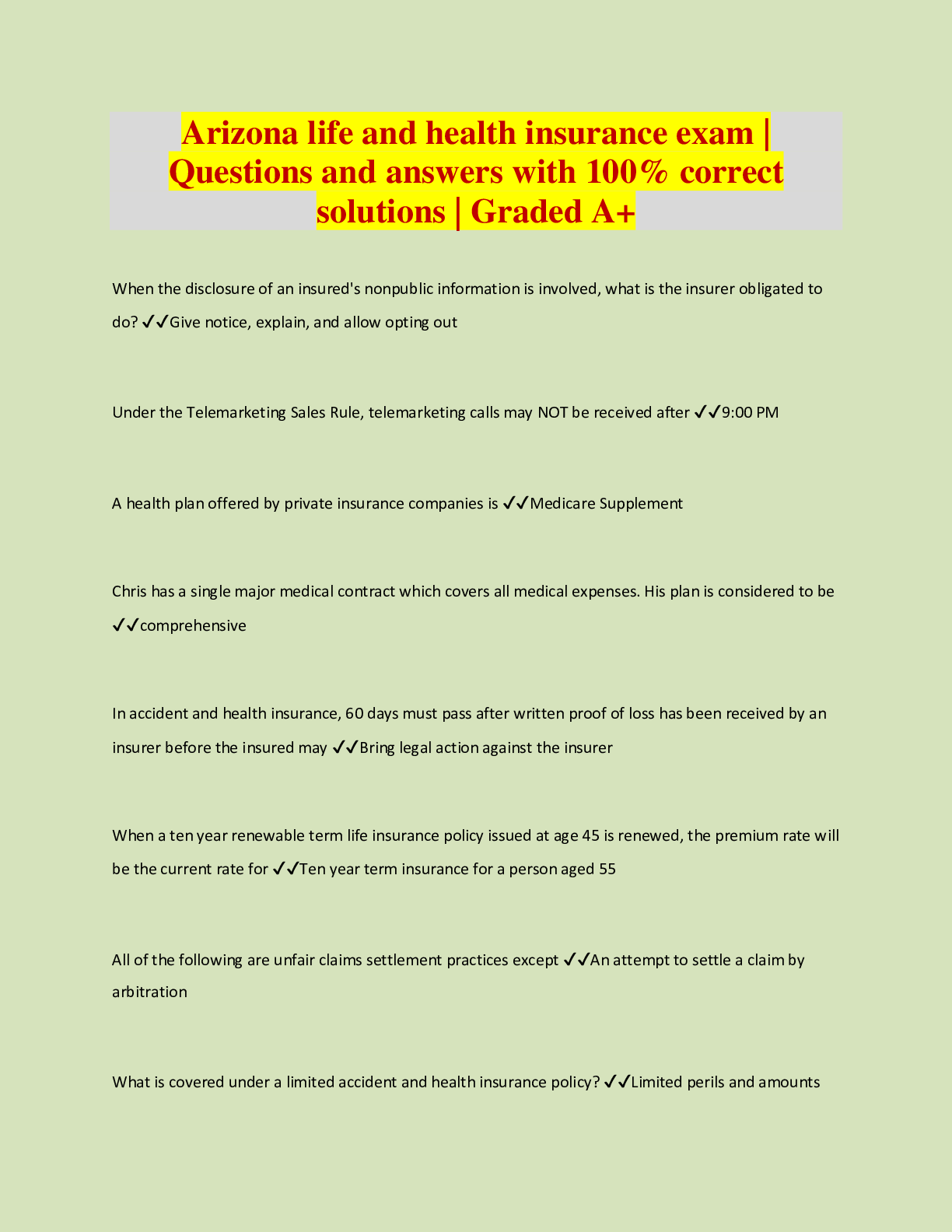
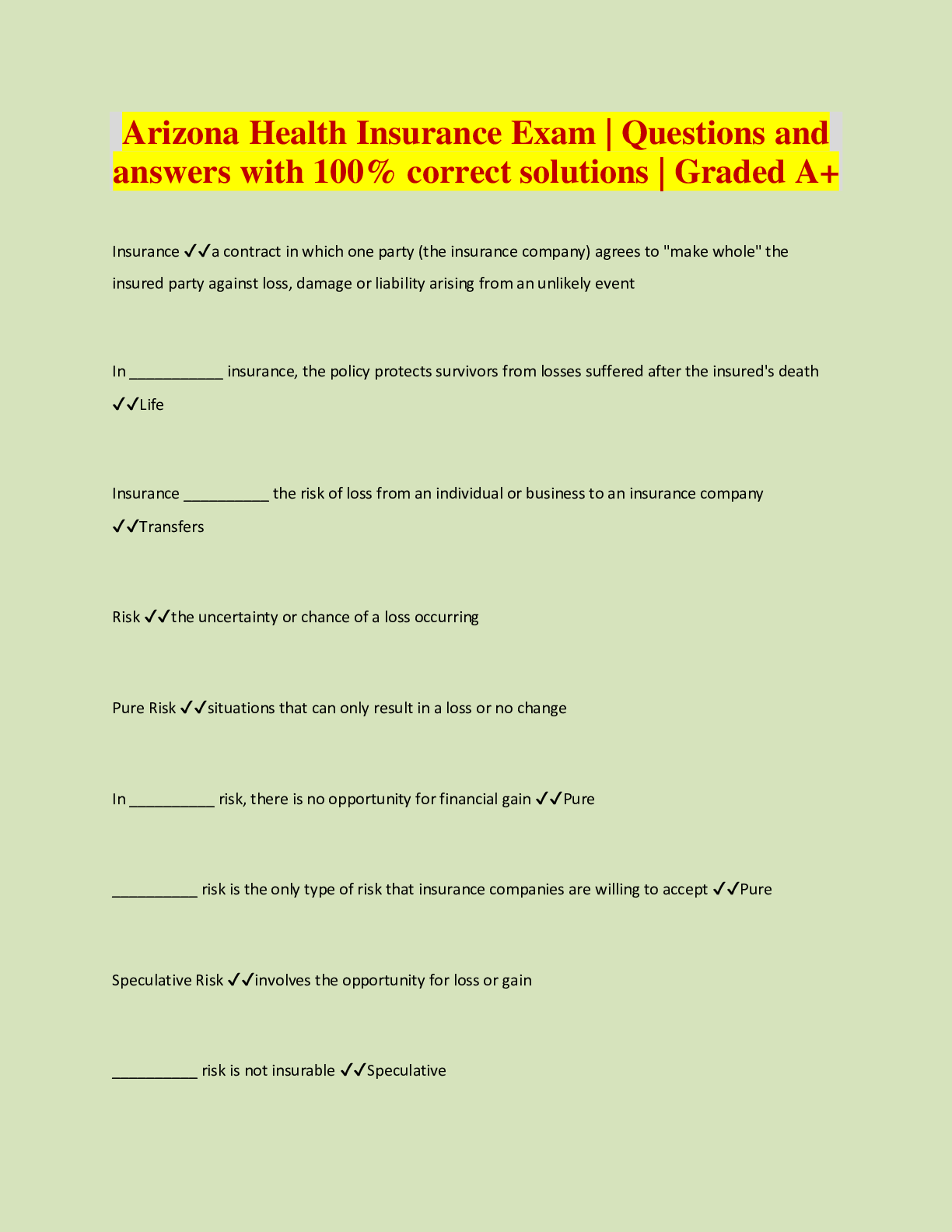
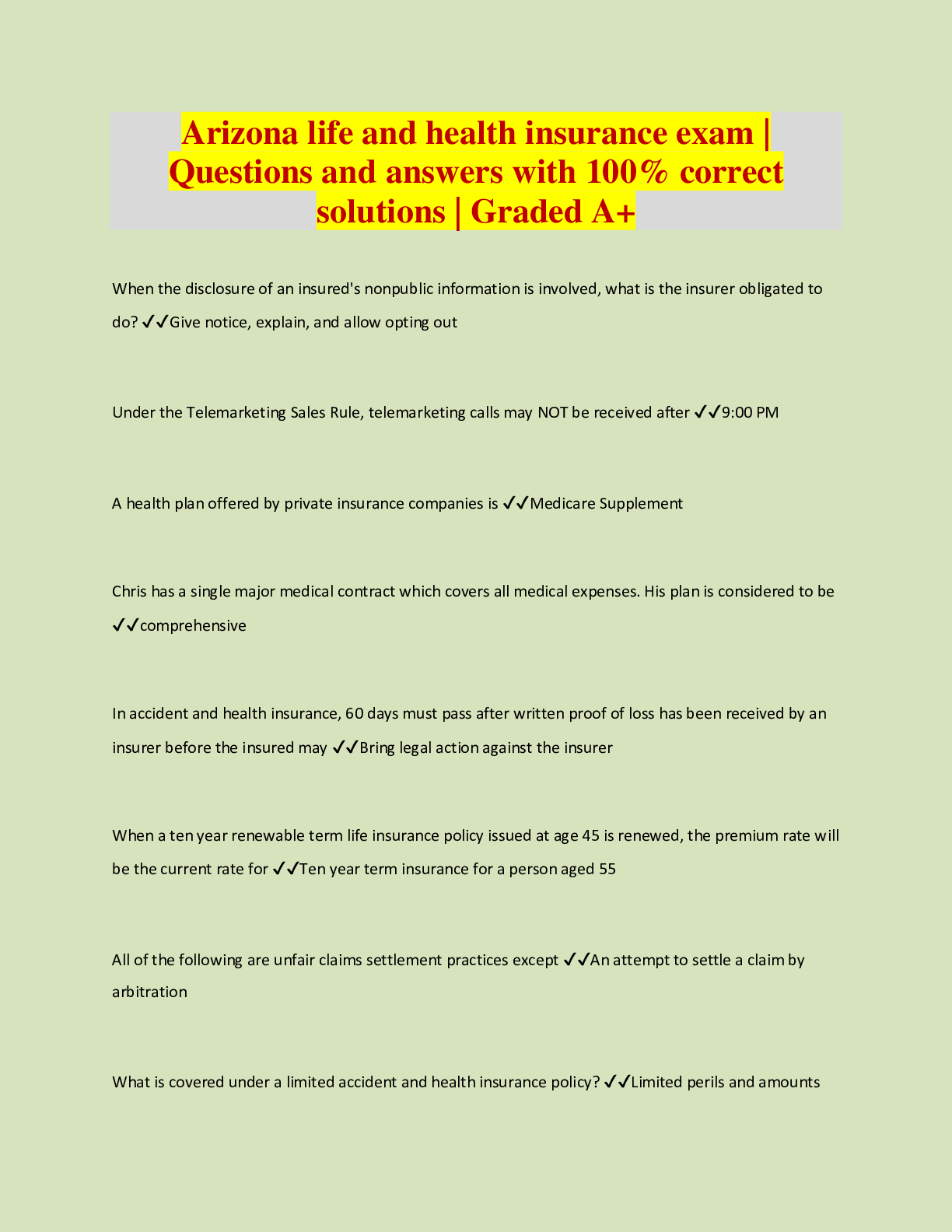




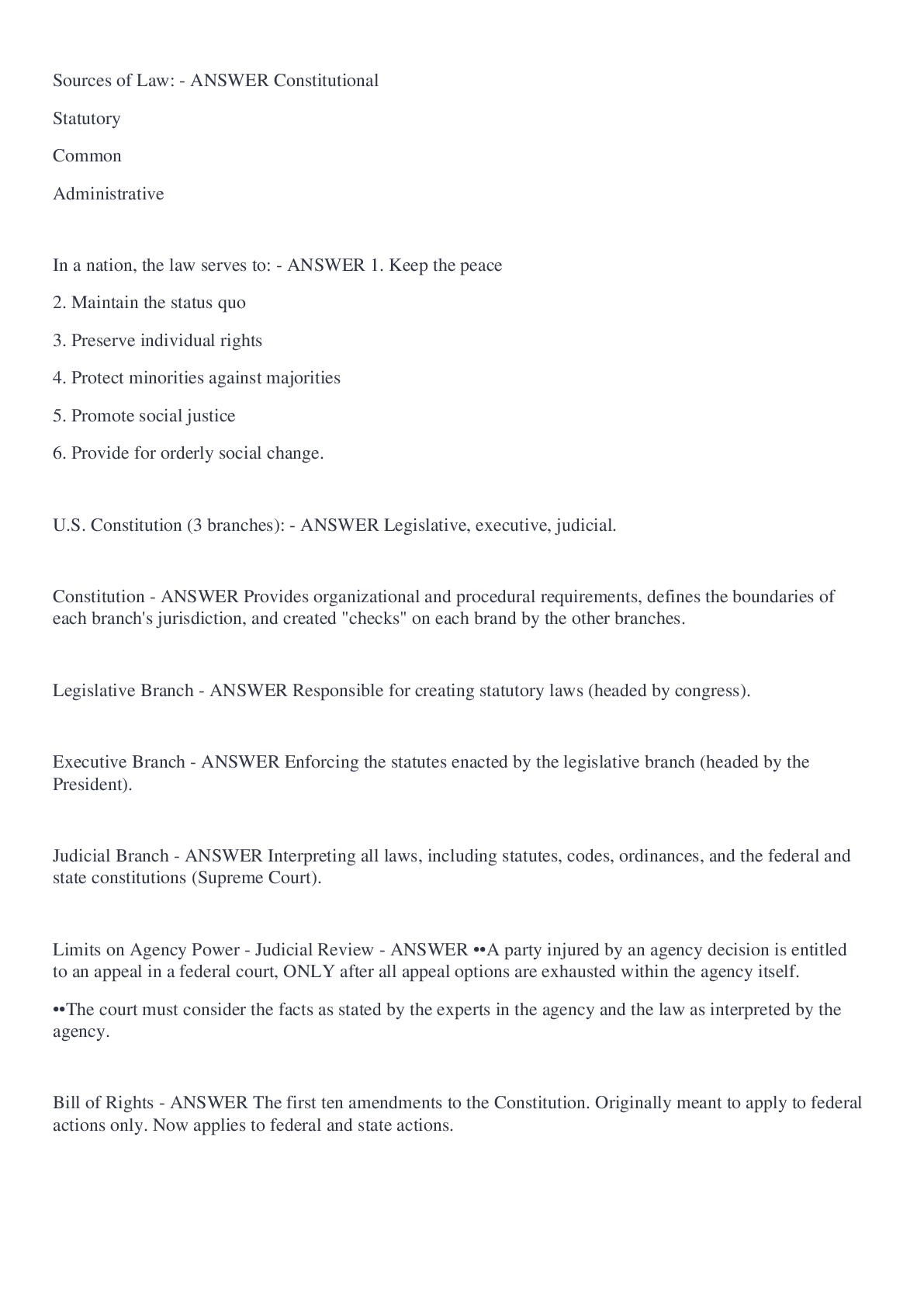
.png)


